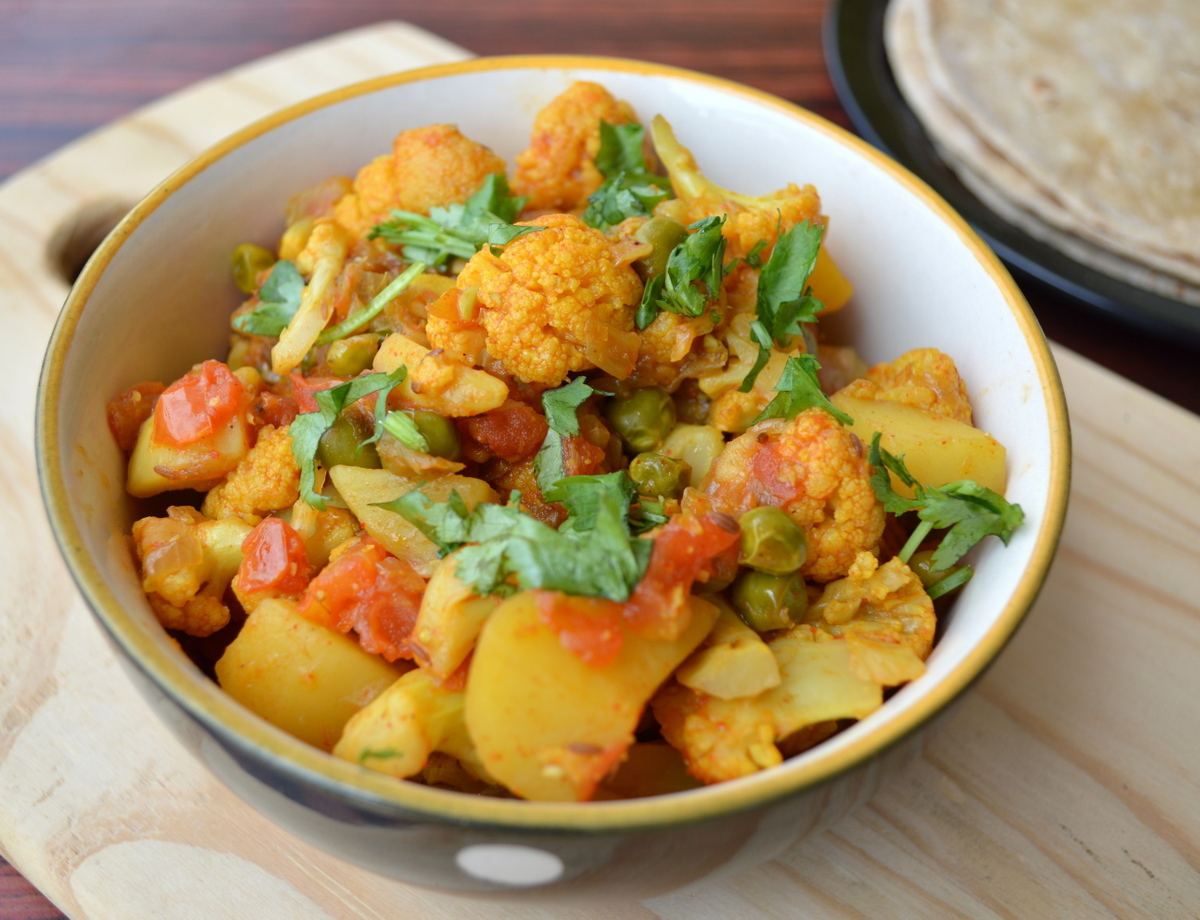Thiruvadhirai is celebrated in the southern states of Tamil Nadu and Kerala, though the rituals in both the states are very different. In Tamil Nadu, people generally, wake up very early, take a bath and prepare the offerings of Kali (a sweet rice pudding) and poduthuval (curried vegetables). I don’t know how our ancestors came up with this unusual combination of sweet and savoryJ.
Thiruvadhirai Poduthuval/thoran or kootu is a side dish that is served alsong with Kali. Every household has their own way of preparing it. Some prepare like how it like a dry curry. Some prepare like a kootu and still others prepare something like a Sambar with 5 or 7 different vegetables. Kaavathu, Mochai, Koorkai (Chinese Potato), Sweet Potato, Pumpkin, Broad Beans are some of the vegetables that are generally used.
I am posting the way my mother prepares it. A special vegetable called Kaavathu is an important part of this thoran. It does not matter how much you add, even a very small piece of it would do. But according to mom, kaavathu is important. But if you don’t find it in your neighborhood, use the other vegetables and prepare this thoran.
Serves – 3 to 4
What you’ll need
- Pumpkin – 1.5 cup, cut into medium sized cubes
- Sweet potato – 1 cup, cut into cubes
- Broad Beans – 8 Nos, cut into 1inch pieces
- Green Peas – 1/2 cup
- Kaavathu – ½ cup, cut into cubes
- Fresh scraped coconut – ¼ cup
- Green Chilly – 1 or 2
- Salt to taste
- Turmeric Powder – ¼ tsp
For tempering
- Coconut oil – 1 tbsp
- Mustard Seeds – 1 tsp
- Urad Dal – ½ tsp
- Curry Leaves – 8 to 10 leaves, torn
Method
- Wash all the vegetables well.
- Toss the vegetables with salt and turmeric powder and place them in a steamer and cook till the vegetables are done. (If you do not have a steamer, place the vegetables in a vessel, toss with turmeric and salt and cook in a pressure cooker for one whistle. Do not add water to the vegetables)
- Once the vegetables are done, remove and allow to cool.
- In the meanwhile, grind the coconut and green chilly into a coarse paste without adding water.
- Heat a Kadai with coconut oil, add mustard seeds, once they splutter add the urad dal.
- After the dal become golden, add the curry leaves and cooked vegetables and mix carefully, taking care not to break the pieces. Let everything get heated up well, i.e for about 4 to 5 minutes.
- Finally add the crushed coconut and green chillies and mix carefully. Remove from heat after 3 to 4 minutes.
Thiruvadhirai Poduthuval is ready.
Note:
This poduthuval is dry. Some people make it like a kootu, for that, you can add about ¼ to ½ cup of water while cooking the vegetables. And follow the same procedure. Also keep aside a little rice flour of the Kali and add it to the kootu at the end. This will make it all come together.














































